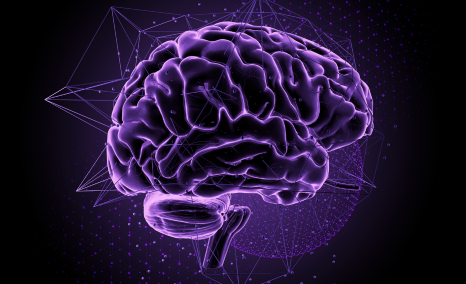Ulotaront (SEP-363856): A New Era in Schizophrenia Treatment
Apr 15, 2024
- Ulotaront (SEP-363856), a novel investigational drug, by Sumitomo Pharma/Otsuka Pharmaceuticals, has shown promise as a potential alternative treatment method for schizophrenia, as it lessens the negative metabolic side effects
- TAAR1 has emerged as a promising target in the treatment of schizophrenia and other psychiatric disorders, as it modulates dopaminergic, serotonergic, and glutamatergic signaling, thereby regulating aspects of reward processing.
Ulotaront is being jointly developed and commercialized as part of a collaboration between Sumitomo Pharma, its US subsidiary Sumitomo Pharma America (SMPA), and Otsuka. The company presented a poster for its drug candidate Ulotaront (SEP-363856) at the Congress of the Schizophrenia International Research Society (SIRS) held in Florence, Italy, from April 3 to April 7, 2024.
Ulotaront (SEP-363856) is a trace amine-associated receptor 1 (TAAR1) agonist with additional agonism serotonin 5-HT1A receptor activity, which sets it apart from conventional antipsychotics that primarily antagonize dopamine D2 receptors, based on a mechanism-independent approach using the in vivo phenotypic SmartCube platform and its associated artificial intelligence algorithms.
Clinical Study of the Role of TAAR1 in Schizophrenia
Meta-analysis based on positron emission tomography (PET) evidence reveals there was elevated dopamine synthesis capacity in schizophrenia patients compared to controls. This abnormality is associated with the onset of the first psychotic episode and the severity of symptoms. Ulotaront is thought to target this mechanism by expressing itself in dopamine neurons and modulating their firing, potentially addressing the dopamine pathophysiology of schizophrenia. However, it is not known whether the effects on dopamine synthesis capacity are directly linked to TAAR1 and/or translated to humans. To address this, two studies for ulotaront were conducted. The first study evaluated dopamine synthesis capacity in TAAR1 knockout (TAAR1-KO) mice, whilst the second tested the effect of ulotaront on dopamine synthesis capacity in patients with schizophrenia.
Downloads
Click Here To Get the Article in PDF
Recent Articles
- Breaking Boundaries: The Promise of LYN-005 in Schizophrenia Treatment
- Beyond Symptom Management: RL-007’s Promise for Cognitive Enhancement in Schizophrenia
- Evenamide (NW-3509): Advancing Solutions for Treatment-Resistant Schizophrenia
- Hope on the Horizon: Brilaroxazine’s Promise for Schizophrenia Patients
- 5 Upcoming Schizophrenia Drugs Competitors for Newly Approved BMS’ KarXT (COBENFY)

Results demonstrated elevated striatal dopamine synthesis capacity and locomotor response to amphetamine in the knockout of TAAR1 in the mice model indicative of TAAR1 involvement in schizophrenia.
The current class of antipsychotic medications has the potential to cause or worsen metabolic syndrome, which is very common in patients with schizophrenia and complicates lifetime disease management. Given that TAAR1 agonists improve oral glucose tolerance in rodents by delaying gastric emptying (a mechanism implicated in the beneficial effects of GLP-1 receptor agonists), a study was conducted to assess the effect of ulotaront on gastric emptying in schizophrenia patients with metabolic syndrome at high risk to develop diabetes. Results suggest ulotaront significantly delayed gastric emptying following a single dose and has been shown to improve glycemic control and reduce body weight in rodent models indicating a promising treatment for metabolic syndrome in schizophrenia patients.
Another study was conducted to assess ulotaront (SEP-363856), on glutamate function in the mouse striatum and hippocampus. Ulotaront showed partial agonism and weak functional activity at 5-HT receptors, indicating its potential as an antipsychotic-like mechanism. The ability of ulotaront to selectively potentiate evoked synaptic responses while reducing spontaneous activity suggests state-dependent modulation of glutamatergic tone and the potential to enhance the signal-to-noise ratio. These findings expand the mechanistic circuit hypothesis of TAAR1 agonists, which may be uniquely positioned to normalize both the excessive dopaminergic tone and regulate abnormal glutamatergic function associated with schizophrenia.
Although clinical trials in acutely psychotic adults with schizophrenia yielded disappointing results compared to placebo, ulotaront remains under evaluation for generalized anxiety disorder and as an adjunctive therapy for major depressive disorder, potentially addressing unmet needs in schizophrenia treatment and enhancing patient outcomes and quality of life.

FAQs
Ulotaront modulates dopaminergic, serotonergic, and glutamatergic signaling pathways by activating TAAR1 and 5-HT1A receptors. This mechanism helps regulate aspects of reward processing and may address both positive and negative symptoms of schizophrenia.
As of now, Ulotaront has not received regulatory approval. It is still undergoing clinical trials to assess its safety and efficacy. The FDA has granted it Breakthrough Therapy Designation, highlighting its potential to address unmet medical needs in schizophrenia treatment.
Unlike traditional antipsychotics that block dopamine receptors, Ulotaront’s unique mechanism may offer benefits in treating a broader range of symptoms with a potentially improved side effect profile. However, direct comparisons with other antipsychotics are still under investigation.
Downloads
Article in PDF
Recent Articles
- Beyond Symptom Management: RL-007’s Promise for Cognitive Enhancement in Schizophrenia
- KarXT: Illuminating Pathways in Schizophrenia Treatment
- A New Dawn: Emraclidine (CVL-231) and the Quest for Effective Schizophrenia Therapeutics
- Evenamide (NW-3509): Advancing Solutions for Treatment-Resistant Schizophrenia
- Hope on the Horizon: Brilaroxazine’s Promise for Schizophrenia Patients



